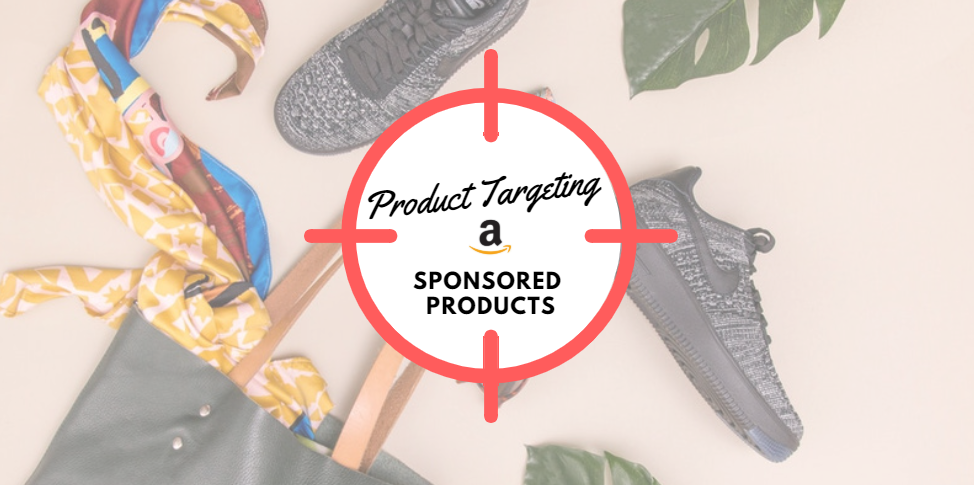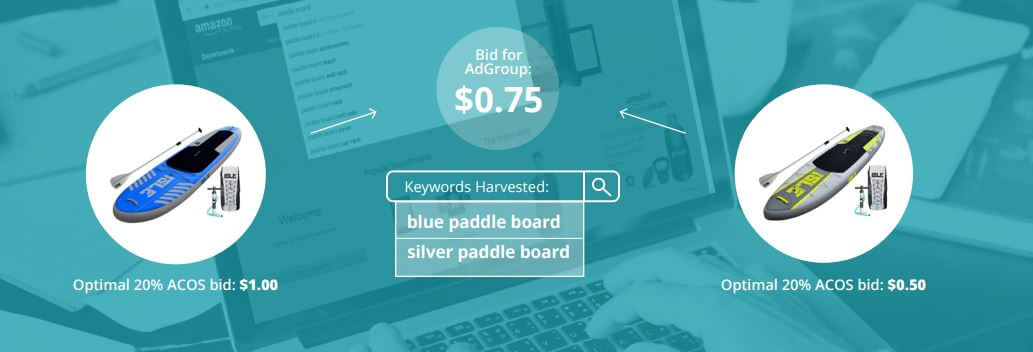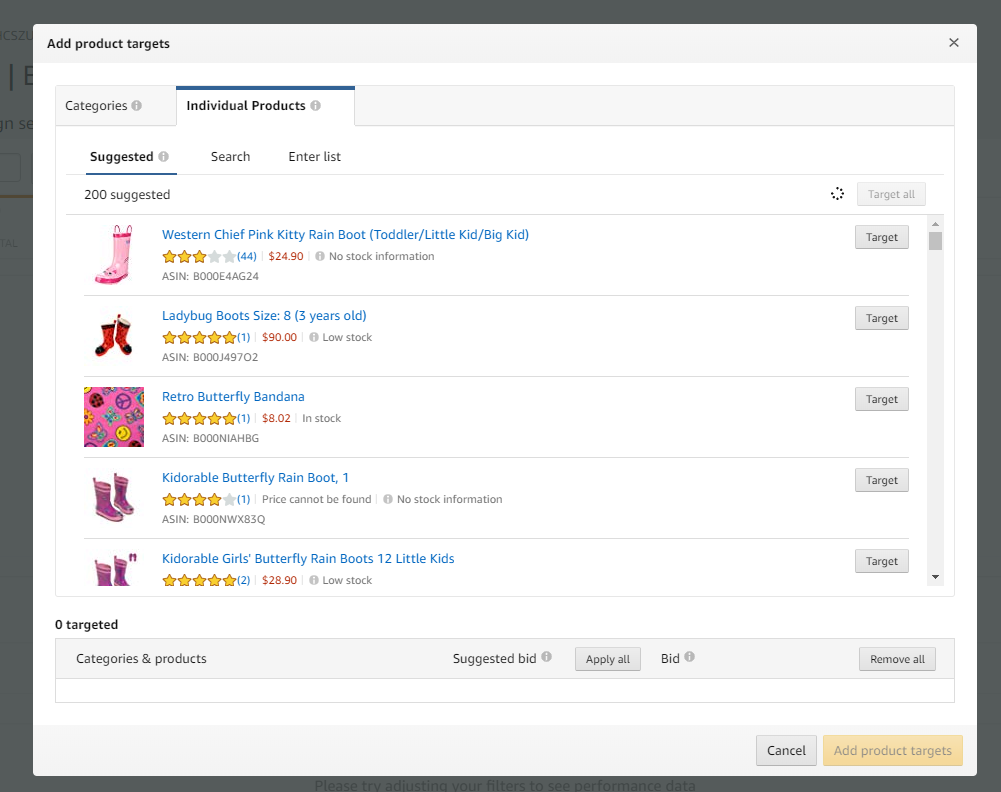As of now, Amazon advertisers have more control on the way they target customers with Sponsored Product Ads using product targeting. Advertisers are already pretty excited to implement this new feature and for good reason.
With product targeting, it’s easier to reach shoppers as they browse detail pages and filter search results for specific products similar to yours.

What is changing for Sponsored Products Targeting?
Sponsored Products has expanded to include several new keyword and product targeting capabilities including:
- Enhanced Auto Targeting, only available in auto SP campaigns
- Product Attributes Targeting, only available in manual SP campaigns
Now there are 4 different default targeting options within auto campaigns including:
- Loose Match / Close Match: This option allows your ad to be shown in the search results if your ad product closely or loosely matches searches results from shoppers.
- Substitutes / Complements: This option shows your ad on the detail pages of products that are substitutes or complements of your ad products.
Introducing Product Targeting:
The first big change is that advertisers will be able to target customers by product (in a similar fashion as Product Display Ads). Advertisers will be able to target either specific ASINs or categories and apply refinements by price, brands or star rating.
Improvements for Auto-targeting:
The second new feature is an improvement to Sponsored Products’ auto-targeting. Now, negative targeting will allow advertisers to choose product auto-targeting or keyword auto-targeting.
3 Benefits of Sponsored Products Product Targeting
According to Amazon, there’s several new benefits to the upgraded version of Sponsored Products’ targeting including:
1. More targeting options: With product targeting, it’s easier to reach shoppers as they browse detail pages and filter search results for specific products similar to yours. Efficiently target groups of ASINS by category, or refine your category target by specific brands, star reviews, and/or price.
For example you can use product targeting in conjunction with the new enhanced bidding controls to create contextual detail page ad campaigns for basket-building and upselling.
2. New campaign controls: Auto-targeting will continue to automatically target your ads to shoppers based on keyword and products but will now allow you to adjust these targeting options within campaign manager. You can also use the new negative product targeting feature to prevent your ads from appearing on specific search results or detail pages that don’t meet your performance goals.
3. New reports: With new category and ASIN level reporting you can isolate what’s working and create new campaigns around successful ASINs and categories. The keyword report will be renamed to the targeting report.

“Sponsored Products targeting has all the benefits of PDA targeting plus additional targeting features. PDA’s have been somewhat of a black box when it comes to identifying what is and isn’t working about your ad, which makes it difficult as advertisers to justify allocating much spend behind them,” Dylan Verburgt, Senior Marketplace Channel Analyst at CPC Strategy said.
“With ASIN level performance, you can optimize your ad to only target products that are converting. Having the ability to target products based on a price range or star rating will allow advertisers to more easily provide a sophisticated and accurate targeting approach by offering enticing deals rather than hand selecting products or using a blanketed approach via expanded targeting.”
Amazon Keyword vs. Product Targeting
Here’s some of the main differences between Amazon’s keyword targeting vs. product targeting capabilities:
What is Keyword Targeting?
Keyword targeting allows you to choose keywords to show your products in customer searches and detail pages. Use this strategy when you know the search terms that shoppers use to search products similar to yours.
For example, if your ad product is a blue paddle board, you may choose the keyword “blue paddle board.” When a shopper searches for a product with the search term “blue paddle board,” your ad is eligible to show in search results and detail pages.
What is Product Targeting?
Product targeting allows you to choose specific products, categories, brands, or other product features that are similar to the product in your ad. Use this strategy to help shoppers find your product when browsing detail pages and categories, or when searching products on Amazon.
For example, if the product in your ad is a Nike Flex shoe for women, you can choose to target the category “women’s running shoes” for all search results and detail pages relevant to this category. You can also choose to target “Adidas” because it’s a brand similar to Nike, or you can target price points, star reviews, or variations of similar products.
Amazon also provide additional information about the “Categories” and “Individual Products” tab:
Categories: In the categories tab, you can target suggested categories that are based on relevance to your ad product. You can also search by category, or you can browse categories listed below the search field. You can also refine categories by brand, price range, and review star ratings.
Individual Products: In the products tab, you can target suggested individual products that are similar to the product in your ad. You can also search for specific products in the search field.
Early Testing & Data Results:
Although we are still in the early stages of testing these new features, we did receive some early feedback from our team regarding the recent holiday performance.
For Enhanced Auto Targeting (only available in auto SP campaigns) we tested the 4 different default targeting options including Loose Match, Close Match, Substitutes, Complements. Here’s what we found:
In one example, a coffee machine brand tested a small sample size (two campaigns) with bids on each of the 4 groups mentioned above being equal. The results? The ‘substitutes’ group has seen the most traffic so far.
But for an electronic accessories brand, performance was a little different. Across 6 campaigns utilizes all of the new features listed above, ‘loose match’ actually turned out to have the most impressions on 3 campaigns.
While it might be too early to report on definitive results, we will continue testing Amazon’s new product targeting features.
For more information on Amazon’s new targeting options for Sponsored Products, email [email protected]
You Might Be Interested In
















